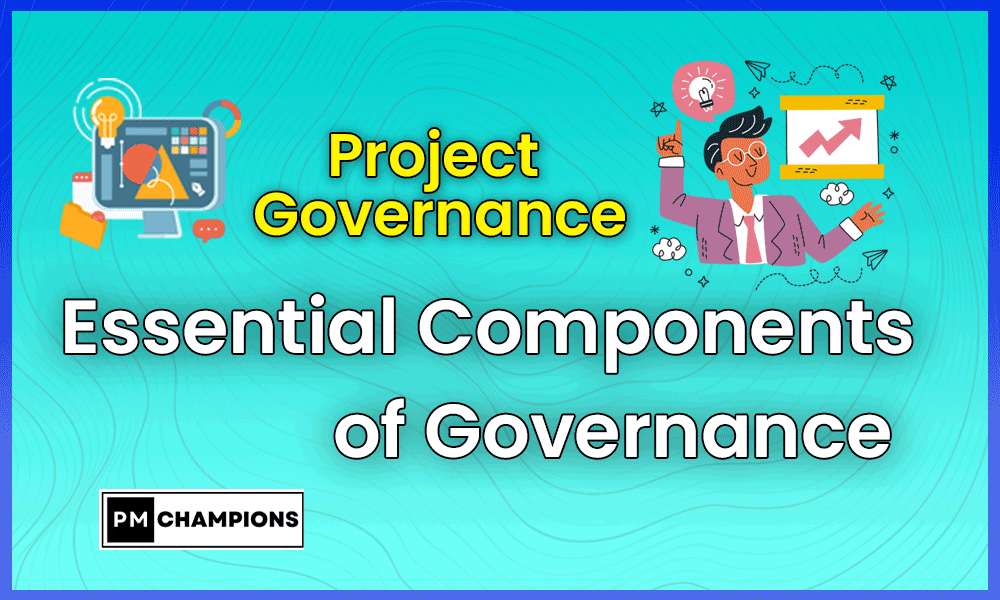
“The art of governance does not consist of making desirable what is possible. It consists in making possible all that is desirable”
Cardinal François Marty

Agility:
What is governance?
Governance is the system and set of rules that govern any area of activity. Applied to the project, governance guarantees the structure, organization and quality of the project.

The objectives of project governance include:
- Establish a clear and consensual vision of how the project will work.
- Ensure constant monitoring of the smooth running of project activities.
- Facilitate decision-making in line with events.
- Organize meetings involving all
stakeholders
. - Ensure a smooth and transparent flow of information.
The Essential Components of Governance
These components are defined at the beginning of the project by the project manager, the project manager or the project/program director, and are validated with the client who is also a stakeholder.
They are usually detailed at least in the Project Plan and ideally in a Quality Assurance Plan (QAP), including:
- The organization of the project
- Roles and responsibilities
- Governance bodies
- Tooling and mechanisms
- Processes and rules
1. Project organization
2. Roles and Responsibilities
At the start of a project, it is necessary to define the roles and responsibilities of the actors, internal and external, for each process and activity.
Two actions are required:
- Describe the missions and prerogatives of each key profile.
- Establish a granular RACI matrix.
A. Description of Key Profiles
The description of the key profiles is summarized and explicitly in the Project Plan and/or the Quality Assurance Plan (QAP).

Here’s an example, Release Manager:
- Coordinating, planning and managing release cycles with Project Managers.
- Coordination of content and publishing efforts based on the backlog.
- Relationship management and coordination of work between distributed teams.
- Contribution to the understanding of the impacts of branches and code mergers.
- Manage code branches (scope, version numbering, tags, etc.).
- Development of deployment and implementation plans.
Risk management
and resolution of issues affecting the scope, timing, and quality of publications.- Deploy code to different environments.
- Coordination of production activities.
- Maintenance of a publication repository and management of key information.
B. The RACI Matrix
In the RACI matrix, each letter has a specific meaning. This meaning may vary depending on whether RACI is used in English or French.
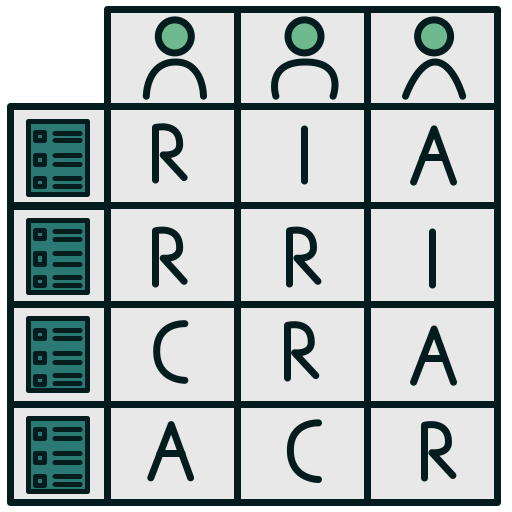
Also, under certain circumstances, additional letters may be added (S for Support, V for Validator, S for Signatory, Z for Zorro 😉).
The matrix lists the activities and tasks of the project, and for each one it indicates the involvement of the actors by the corresponding letters.
To avoid any ambiguity, it is important to always recall the meaning of each letter in the context of the project in question (legend). A common definition is:
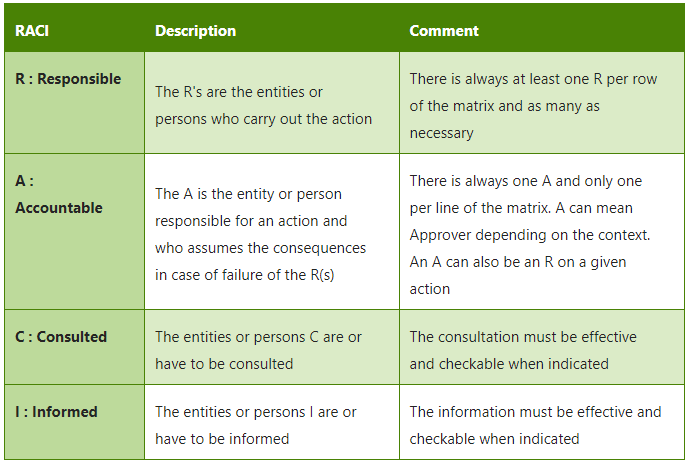
3. Governance bodies
A. The Committees:
B. SideLines of Committees
4.Tooling and mechanisms
To supervise and manage the project in an optimal way, the use of appropriate tools is essential. The project team must collaborate on similar tools that promote the fluid flow of information:
- project management software,
- file sharing space,
- dashboards,
- standardized exchange formats, etc.
The choice of tools involves both the internal team and the client, as their use is linked to control and reporting mechanisms aimed at measuring progress and ensuring the smooth running of the project.
With this in mind, it is best to avoid duplication of tools, data, or formats as much as possible.

For example, using a customer ticketing tool instead of Jira is conceivable, but this should not compromise best practices for measuring
KPIs
such as those practiced with the
Eazy BI
module.
Similarly, using Slack instead of Teams can deprive the project team of the ability to exchange data asynchronously, which is essential for traceability and prioritization of information.
Finally, the incompatibility between tools can be an obstacle in daily life that is best anticipated.
5. Processes and rules
In the interests of transparency and efficiency, the most common processes and rules can be defined at the start of the project.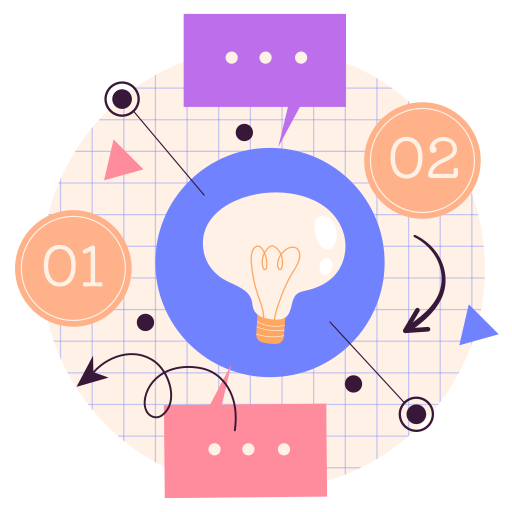
The latter, once validated by the client, will have the force of law during the project. This is why accuracy in their description and operability are essential factors: care should be taken to apply the WWWWHHW method for each one (What, Who, Where, When, How, How much, Why).
Here are some of the most common examples:
- Onboarding process.
- Ramp-up/ramp-down management.
- Deliverable validation process.
- Change management process.
- Escalation process.
- Data security and privacy rules.
- Ordering and invoicing process.
- Document naming rules.
- Back-up principles.
Governance is not an option
The definition of governance is therefore an essential prerequisite of the project and its scope should not be underestimated.
In the event of difficulties, several components of governance, such as the roles and responsibilities of
stakeholders
, can be helpful as they can be challenged with the client.
This approach is applicable to all types of projects, regardless of their methodology or the nature of the engagement.
Governance is not set in stone
Defined in the early stages of the project, governance remains dynamic and adaptable throughout the process.
Based on a set of best practices, often derived from experience, and on assumptions about the best way to manage a specific project, governance is not inherently perfect.
It is essential to regularly question this governance and integrate it into a continuous improvement process.
Governance is inclusive
Governance involves
all stakeholders in the
project: the client, as the main sponsor, as well as the various entities of its organization involved (IT, Business, etc.), third parties (contributors or suppliers), as well as the service provider.

All these entities work together according to common rules established within the framework of governance. Any decision by the client to deviate from these principles, in particular by the desire to compartmentalize the project, is recorded and traced.



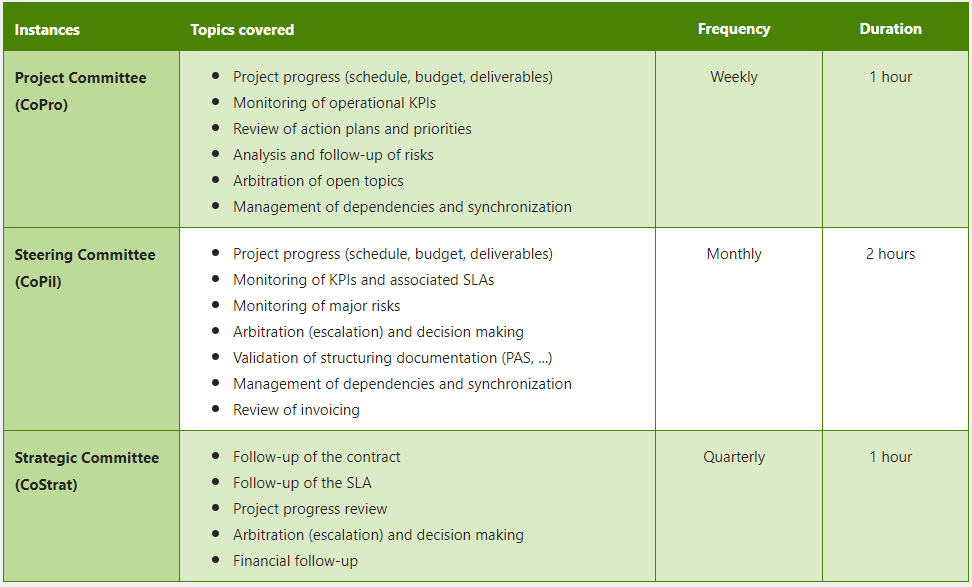
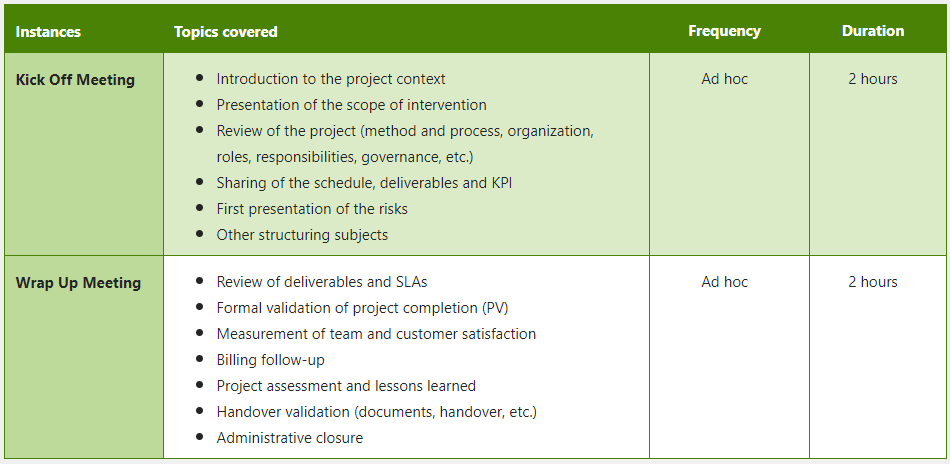




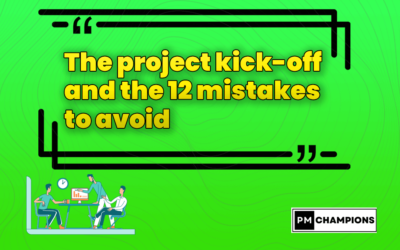


0 Comments